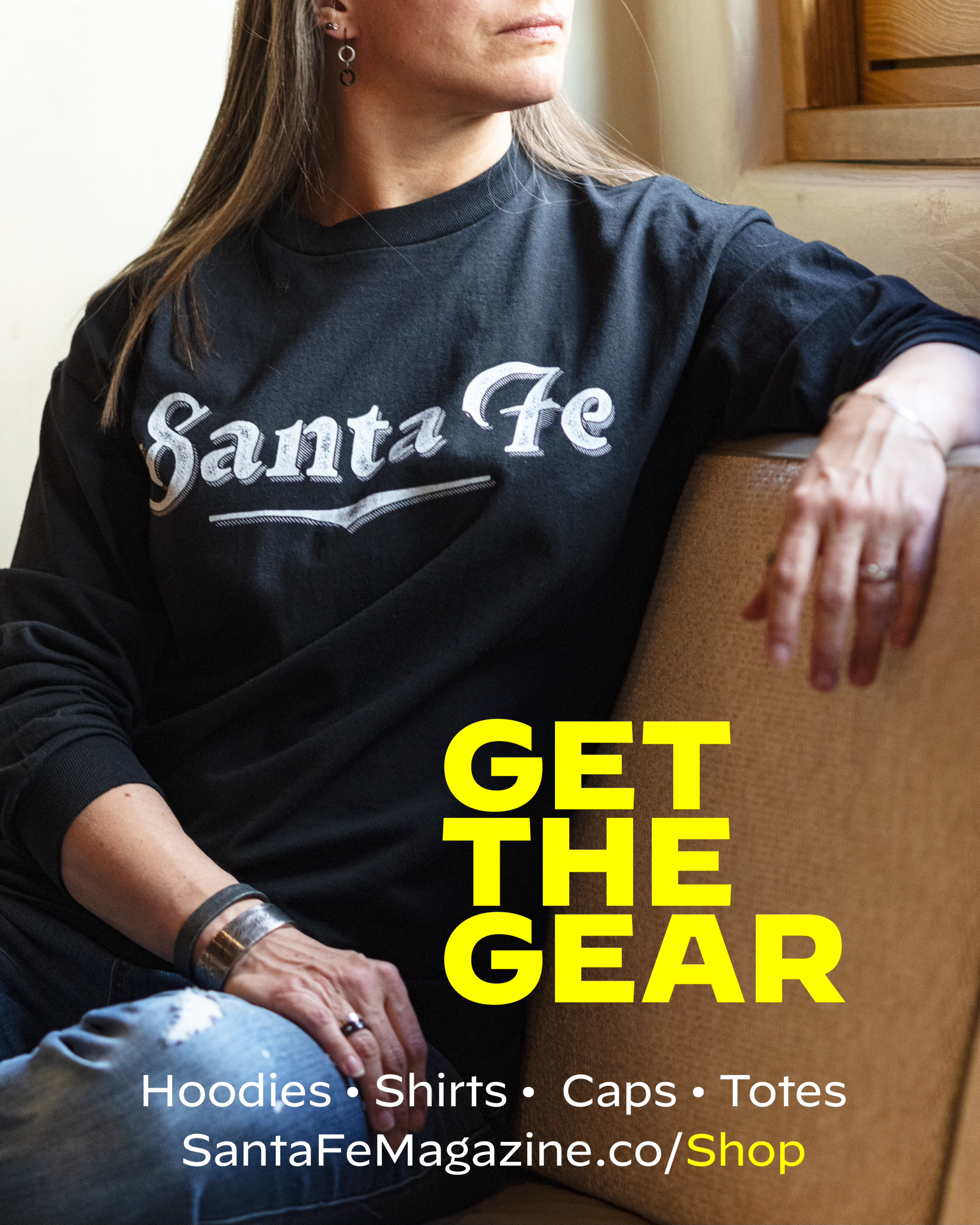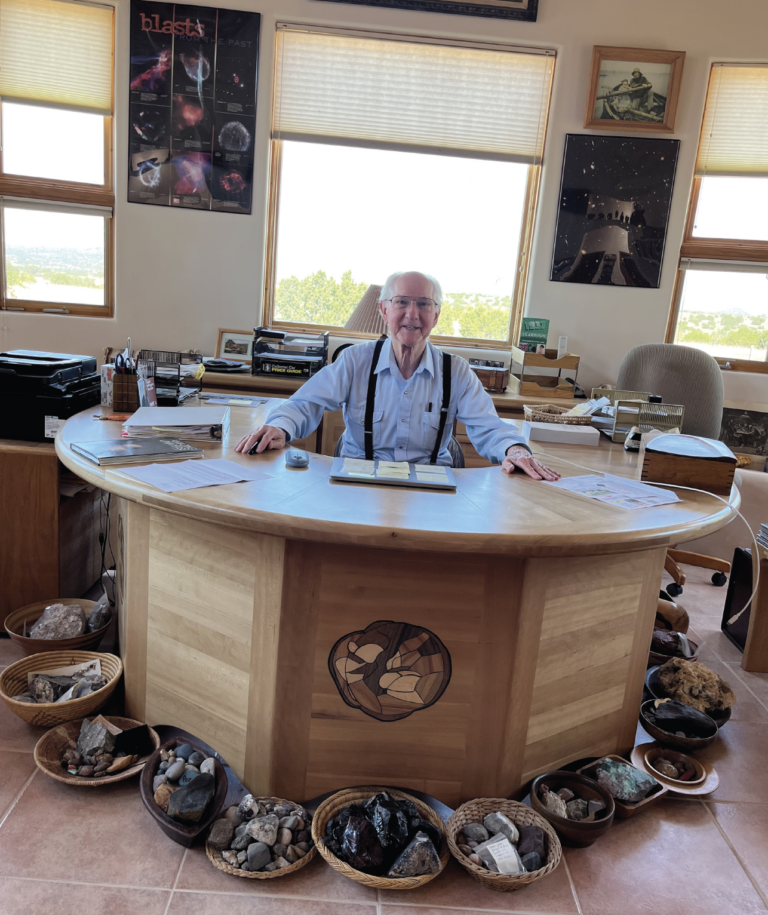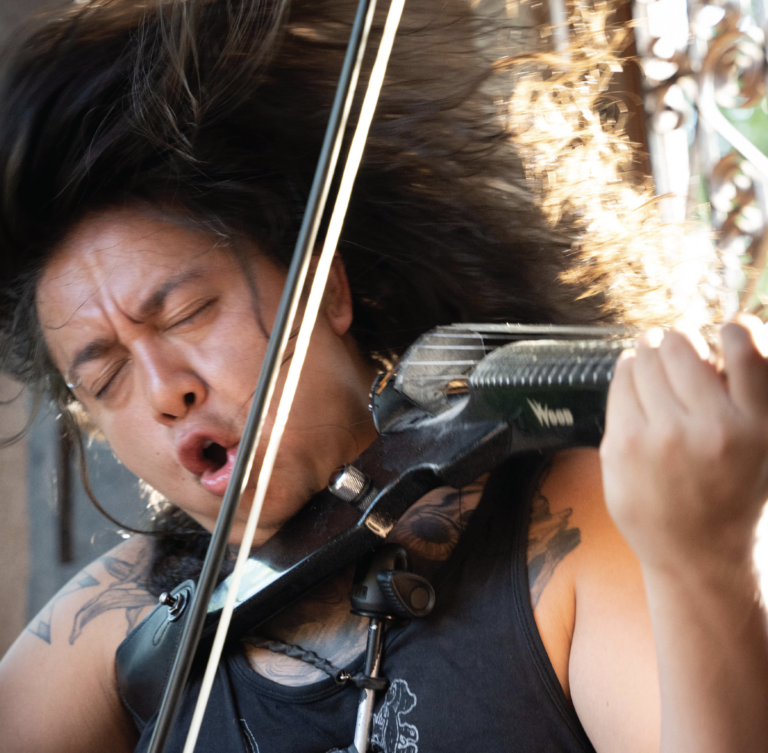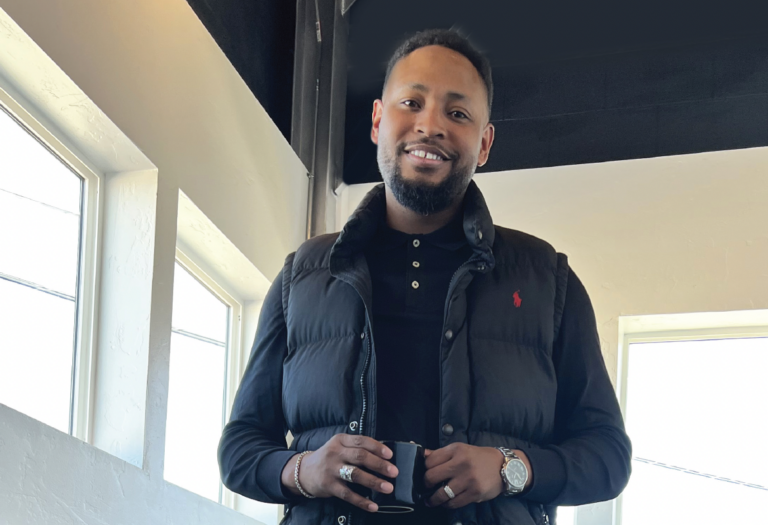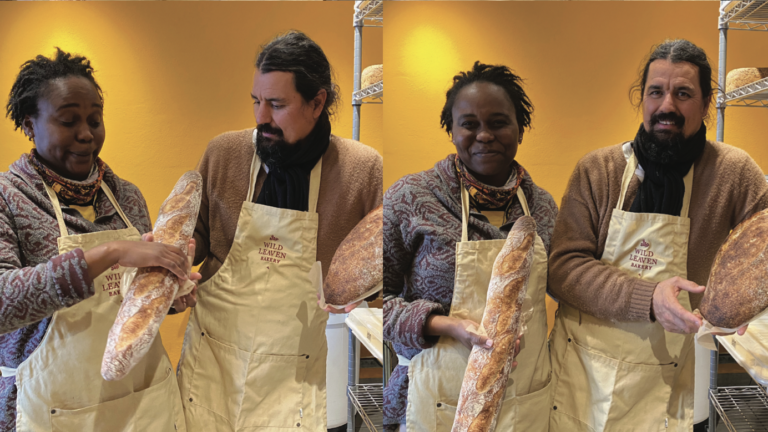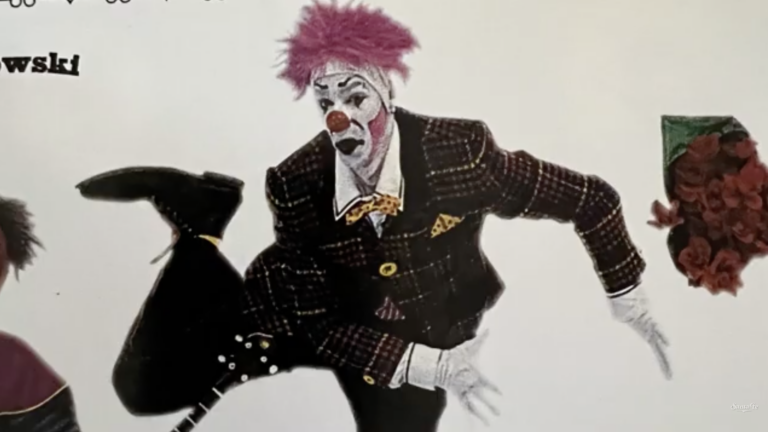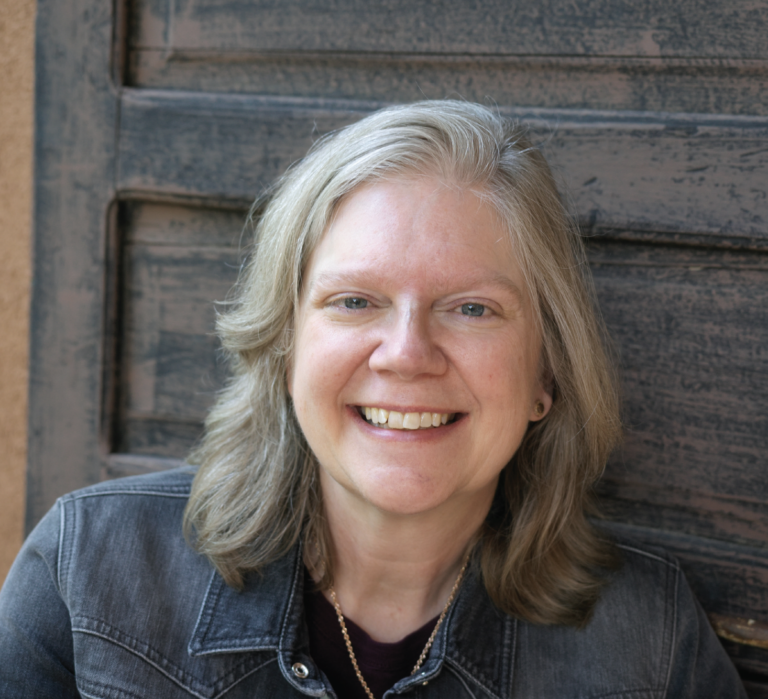YOU’RE LUCKY IF YOU’VE EATEN at Johnny Ortiz’s / Shed Project. That’s because tickets to these intimate, communal dinner parties are typically gone in a couple of hours.
Guests are served food raised and grown by Johnny on his ranch and cooked over wood harvested by Johnny. They eat on a table made by Johnny with ceramics fired by Johnny. He’s a busy guy.
Ortiz was raised on the Taos Pueblo. He vividly remembers “eating a wild rose my grandfather gave me,” and how that single experience changed his life.
By 19, he was cooking at Alinea and other high-flying establishments. Then, at the top of his game, he quit. Now he’s says “I want to make the best bowl of beans you’ll ever eat.”
We don’t want to sell anything to anyone at the / Shed Project. It’s not a restaurant – we’re about more than dining. We’re trying to exemplify a way of life that has been lost. The idea that you can live simply in unison with your environment. We have 23 acres of land, 16 of pasture, and I have an old mercantile with a root cellar and a farm house that will be the dinner space when we start serving again this Spring.
I raise cows and sheep. The meat is used for our dinners. The sheep wool is used to make the blankets for the rooms that people stay in. The manure feeds our vegetable gardens. I harvest firewood to cook on. I dig clay to make my own ceramics, which is what we eat on.
The / Shed project is an ecosystem. This is not about food on a plate. It’s about everything from the soil to the cultivation to the sustainable way of growing things to what you experience at the table. And the great thing is that it’s fleeting, so you have to notice nature in the moment. You may only have one chance to gather rose hips after the frosts and before the birds get them.
During the spring and summer, I spend at least three long days a month with my shovel, moving dirt and water around to get the water to certain parts of my pasture. The ecosystem is about a lot of stuff you don’t necessarily see at the dinner table.
I’m from Taos Pueblo on my dad’s side. My mom’s side is from Spain and Mexico, so I’m what they call Mestizo, a mix of cultures. I use these cultures. / Shed started in Northern California, in Marin County. And it was actually very successful. But I felt I was missing something. The project needed to be more tied to my life, my ancestry. It had to be in New Mexico. I had to explore my background, how people lived, what they grew, what their lives were like. Marin was too far removed from all of it. So I moved. And I needed to be here, northern New Mexico. My ancestors were native to this area, and I’m trying to set roots and explore those relations. For instance, I love using a horno in my cooking. It’s something that’s special to me. People think of it as Native American, but it actually comes from the Moorish and was brought here by the Spanish. So all the traditions that we have in New Mexico are based on more than what meets the eye. And a lot of the / Shed project is about exploring those things.
The dinners are all seasonal, all part of this ecosystem. The spring is all about the vegetables, the salads. In summer it’s the fruits, the chokeberries. It’s mushrooms in the fall and meat in the winter. You will have completely different experiences at the table each season, just like we do in life.
I’ve realized recently that the / Shed project and my personal life are blurring together. On the pueblo, we have a similar ethos, where daily life and spiritual life aren’t disconnected. They’re the same thing. So I see this project as that philosophy in physical form. It’s about self-sustainability, it’s about regenerative practices, it’s about honoring the cultures I come from. And it culminates in food.
Food is the best conduit for connection, for storytelling. When everyone sits at the table and has a good time, they’re telling stories and sharing food.
I was just interested in cooking at first. I don’t say I’m a chef because I spend the least amount of time in the kitchen compared to the rest of the work. The dinners are just the fruiting body of the work – mostly, I’m interacting with the landscape and nature. And that’s my story at these dinners. But the dinners are not about me or my food, it’s about the stories people are telling each other. And those can be about anything.
Yeah, I had some success as a chef. But restaurants are like a lot of industries, where there’s just a lot of bullshit. I mean, you go to these restaurants, and they talk everything up – natural, farm to table, whatever. And you look behind the scenes and there’s just nothing special about it. I mean at places like the French Laundry, they blanch their vegetables in diamond kosher salted water, which is sodium chloride with anti-caking agents like ferrocyanide. There’s no flavor, there’s no story, there’s no nutrition.
Look, there are speckles of authenticity at these places, but I wanted to try to be fully authentic. At these restaurants, it’s always about the outcome. The ingredients were less the focus than the idea. At / Shed, the ingredients are the best, and they tell a story about the place. We’re just showing some possibilities – inspiring people to look at their life differently.
Making the best bowl of beans you’ve ever had might sound easy, but it takes a lot to find the perfect soil to grow the perfect bean, to find the perfect chili, to use the perfect pot to cook them in, the perfect water to soak them in, the perfect wood to cook them over. That’s really what the / Shed project is doing. It’s not easy, it’s not profitable on a large scale, but it’s rewarding.
A chef runs a kitchen. I don’t run a kitchen, I do all of the cooking myself. Chefs don’t spend time out in the farm or in the wild. But if you are out there and understand how to grow a perfect bean plant, you understand a lot more about how to cook that bowl of beans.
It’s a cool, synergistic thing — once you get interested in learning how to grow food, you learn about the land and the people and where it all comes from. And the food is the perfect expression of all of this – in one form. With food, all the senses are present and everything is completely fleeting, so you have to be in the moment, both as curator and as participant. I don’t know, it feels just so perfect.
With a painting, you can create it, and there it is – it’s permanent. But a dinner? There’s so much emotion in it, so much connection to all these things, but people still think of it as just food. They think, Why would I spend $150 on a dinner? That’s stupid. But it’s about so much more than that.
Learn more at shed-project.com
Photo Mary Moon

